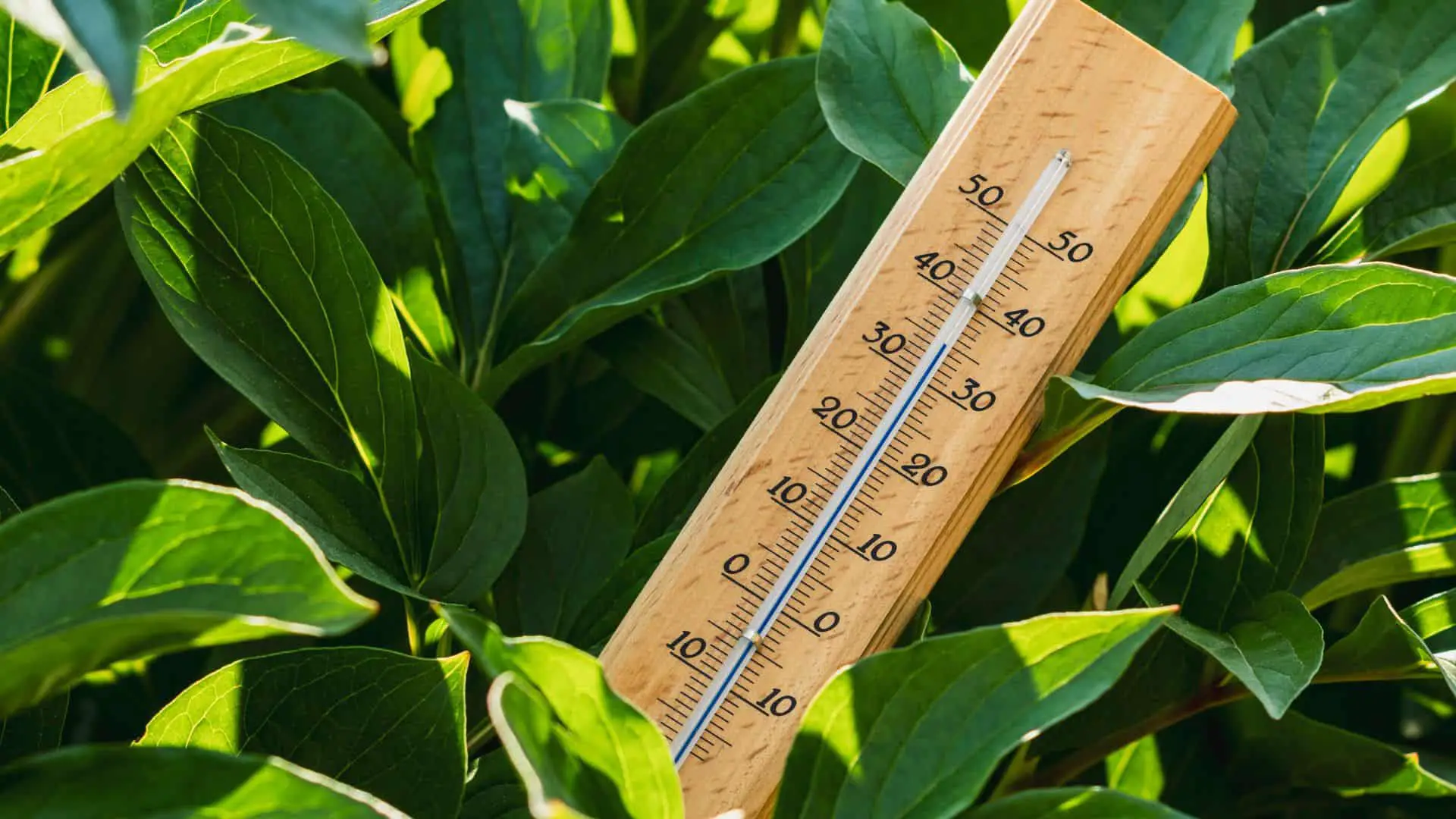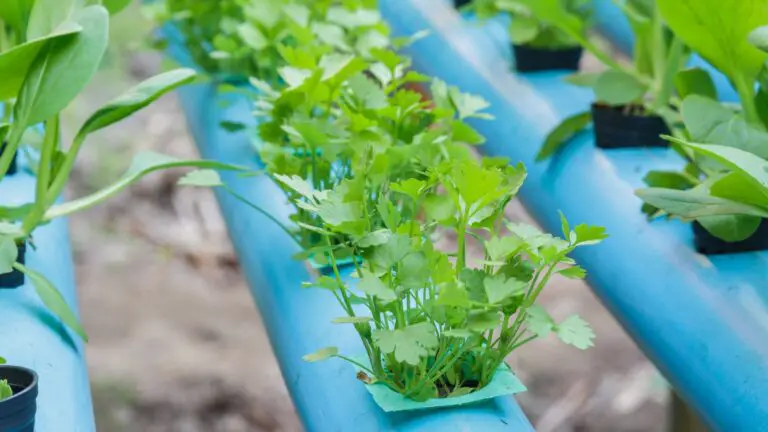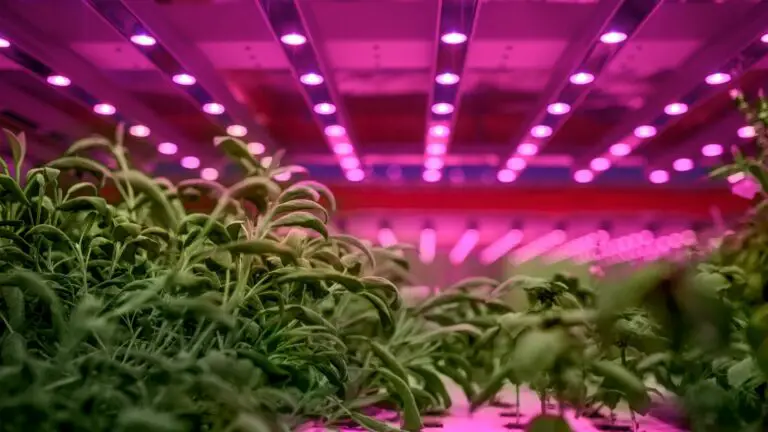10 Ways to Reduce Heat in Your Grow Room
Disclosure: Your purchases through our links may earn us a small commission, supporting our site’s ability to provide valuable information to our readers. Rest assured, it won’t impact your price. Thank you for your support.
If you’ve ever spent a summer afternoon in a grow room, you know it can feel like stepping into a sauna. This isn’t just uncomfortable for us, but it’s a potential sauna situation for your plants, too.
The optimal temperature range for growth varies depending on the type of plants you’re growing. Still, one thing is for sure, heat impedes growth! With this in mind, we’ve compiled a comprehensive guide on the best ways to keep your grow room cool by reducing the heat.
What are some common signs of heat stress in plants?
Heat stress in plants can be a real sneaky nuisance, presenting itself through a variety of signs.
- Leaves may start to wilt or droop
- General stunted growth
- Yellow or brown leaves
- Shriveled leaves
- Blossom and flower drop
How to Reduce Heat in Your Grow Room and Keep It Cool
1. Get a Fan
One of the most effective ways to reduce heat in your grow room is to get a fan. You can install a ceiling fan or a simple oscillating fan. Fans can move air around the room and create a gentle breeze, which will help to cool the room and refresh the air. Also, consider installing a ventilation system that works together with your fan to extract stale hot air out of your grow room and replace it with fresh air.
2. Use an Air Conditioner
If your grow room gets extremely hot, use an air conditioner to cool the temperature. You can choose between a window unit or a portable unit on the floor. Air conditioners can be expensive in price and maintenance. Still, they are worth the investment if your plants are at risk of becoming damaged due to excessive heat.
3. Lower Your Grow Light Wattage
High-wattage lights can generate a lot of heat, especially for HID lights. Switching to LED grow lights is a great way to reduce heat in your grow room; they are energy efficient and last longer than HID bulbs. If you can’t switch to LED, consider lowering your grow light’s wattage to reduce heat.
4. Use Shade Cloth
Shade cloth can deflect heat and UV rays from your grow room, preventing your plants from absorbing the heat. You can install shade cloth inside your grow room or outside, depending on the location of your grow room. Shade cloth comes in different materials and densities; choose one with the right density for your plants.
5. Insulate Your Grow Room
Insulating your grow room is a great way to keep the temperature down. You can insulate the walls and ceilings with thermal insulation or drywall. Insulating your grow room will prevent the heat from escaping or entering your grow room, allowing your air conditioning and ventilation systems to work more efficiently.
6. Water Your Plants Regularly
Watering your plants regularly is not only good for the health of the plants, but it can also help to cool the room. The process of watering emits moisture into the air, and moisture is essential for keeping plants cool and preventing dry heat. You can also use a humidifier to increase the humidity levels in the grow room.
7. Use CO2 to Regulate Temperature
CO2 is great for promoting plant growth but can also regulate the temperature in your growing room. CO2 can reduce the heat stress your plants experience by regulating the temperature. However, using CO2 to control temperature is not a standalone solution and should always be used with other cooling methods.
8. Turn off Equipment When Not In Use
Turn off equipment that is not in use, especially if it’s generatin
g heat. This may include pumps, lights, fans, and other tools that work with your plants. Turning off equipment when not in use will help to reduce heat buildup in your grow room.
9. Consider Moving to a Cooler Location
If all else fails, and you’ve tried all the above methods, then you might have to move your grow room to a cooler location. You can move your grow room to a cooler room. Alternatively, you can move your grow room indoors and control the temperature with air conditioning.
10. Use Reflective Material
Using reflective material can be an effective way to redirect light and heat. Reflective material can be placed around or behind your grow lights to redirect heat and light. This will help prevent the heat from entering the grow room and keep the room cooler.
What Are the Optimal Temperature Ranges for Different Types of Plants
Each plant species has a unique temperature range within which they thrive. As a grower, it’s crucial to understand these differences to foster a conducive environment for your plants.
- Tomatoes:
Tomatoes like to grow when it’s warm. It’s best to plant them after no more chance of frost. They do well when daytime temperatures are between 70 and 85 degrees Fahrenheit and nighttime temperatures are between 59 and 68 degrees Fahrenheit. Tomatoes can handle really hot or cold temperatures, but only for a short time.
- Peppers:
Pepper plants like to be warm but not too hot. They’re happiest when it’s between 70-90 degrees Fahrenheit during the day and 65-70 degrees Fahrenheit at night. But remember, all peppers are not the same; some might like it a little differently. Be careful, though! Don’t let it get colder than 50 degrees Fahrenheit at night. If it does, you might hurt your peppers or even kill them.
- Lettuce:
Lettuce loves cool weather, doing its best growing when daytime temperatures are around 45 to 75°F. It likes a bit of a chill at night, too; somewhere between 40 to 60°F is just right. If it gets too hot, above 70°F, the lettuce can start to bolt. This means it shoots up flowers, and the leaves might taste bitter. The sweet spot for growing lettuce? That’s when it’s 60 to 65°F out.
- Spinach:
Spinach likes cool weather, best between 50 and 70 degrees Fahrenheit. It can even handle the cold down to 20 degrees Fahrenheit. Still, it won’t grow as fast. If it gets hotter than 75 degrees Fahrenheit, spinach will start producing seeds called “bolting.”
Remember, these are general guidelines, and minor fluctuations can still maintain healthy growth. However, consistently exceeding these limits can stress your plants, negatively impacting their development and yield.
Final Thoughts
In conclusion, keeping your grow room cool is essential for promoting growth and preventing heat stress. You can combine these methods to create a healthy environment for your plants. Not all plants are created equally, and different plants have different temperature requirements.
Therefore, it’s essential to experiment with different techniques and methods to find the best solution for your specific plants. By following these tips, you can be assured that your plants will thrive and give you a successful yield.
Thank you for reading!




